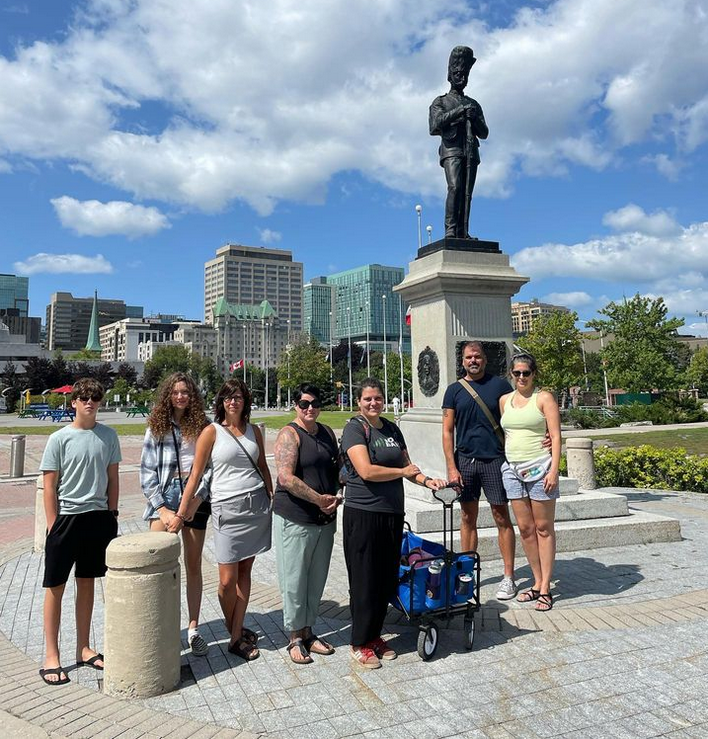
Image Credit: Jaime Morse leading a walking tour with Indigenous Walks
As part of the release of the hardcover release of my book, Walking as Artistic Practice (softcover comes out in April!), I’m going to be publishing some brief interviews with the various artists, authors, researchers, creatives, collectives, and platforms whose art practice, written material, or other works I cite and mention.
My 13th interview in this series is with Jaime Morse (formerly Koebel) who is a Cree-Métis woman from northern Alberta. She’s been living on Anishnaabe unceded, unsurrendered Anishnaabe Algonquin territory since 2000.
Jaime is a mother, visual artist, dancer, storyteller, educator and business owner.
EM: First, thank you for chatting with me about your project Indigenous Walks (2014-ongoing). I cite this project in chapter three (Observational Walking) in the subsection on “Sound,” mentioning the importance of active listening. How would you describe this project for people who might not be familiar with it?
JM: Indigenous Walks is an evolving tour about art, architecture, landscape and monuments from an Indigenous perspective.
EM: What are your thoughts on walking as artistic practice?
JM: I was just talking about this with my son the other day. How sometimes when I’m giving a tour I’m “on” – meaning, there’s an emotional connection to the content and like any performance might prepare before an act, I’ll do the same. Before my tours – I smudge. I pray. There’s a ritual that’s important to me.
It all leads into becoming the storyteller who gathers, collects, shares and cross-pollinates. I feel very much like an insect providing small insights – snippets of information feeding into peoples’ understanding. I have no idea how much a person understands about Indigenous issues when they come on a tour but communicating through each space, walking, talking – they’re all inputs for engaging with the act of taking a walk in my moccasins so to speak.
EM: Can you tell us about any recent or upcoming projects you are excited about?
JM: I’m a founding member of Shushkitew. It’s a Métis artist collective. I’ve recently stepped back to let others lead but the goal of the collective is to bring an awareness of Métis art within our artistic institutions. The very being of Métis provides discomfort for many which has lead to assumptions and mislabelled art, a lack of Métis art experts in institutions or even a record of Metis works or current issues of Fetis taking up space in Indigenous arts practises and communities. At this time, it’s an important collective to be in existence.
I’m also teaching a second year Indigenous Studies course at the University of Ottawa and still working at the National Gallery of Canada. I’m working on two new exciting exhibits there. Nick Sikkuark: Humour and Horror (Nov.16@5PM) & Radical Stitch (all Indigenous beadwork) coming to the NGC in March. My role is as an educator for these exhibitions.